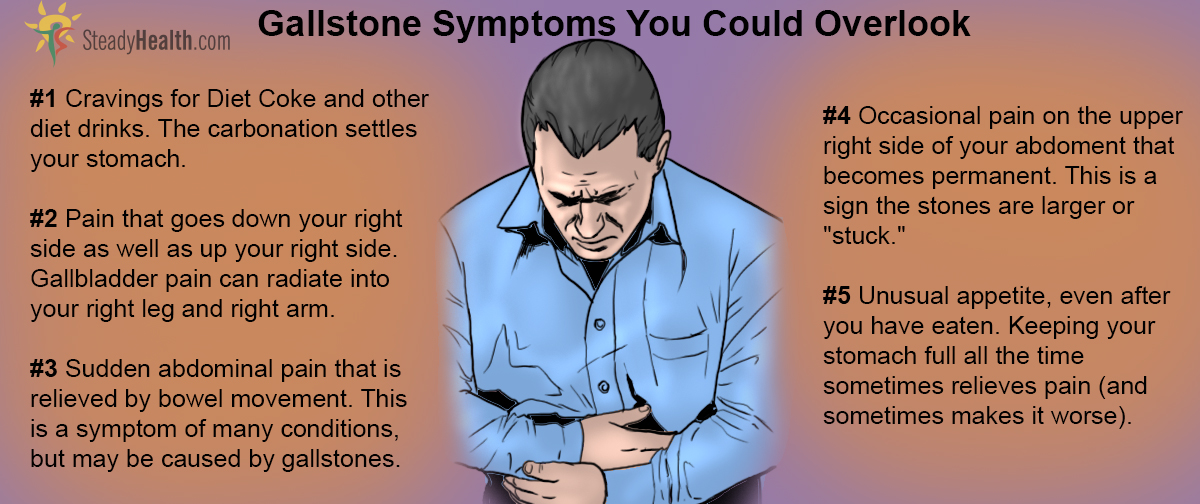Table of Contents
Cholecystectomy (koh-luh-sis-TEK-tuh-me) is one of the most common of all surgical procedures performed on both men and women over the age of 50. A cholecystectomy is the surgical removal of the gallbladder. This surgery is usually performed after a painful attack of gallstones, and usually without a lot of prior planning.
Knowing when you need to see the doctor is key to minimizing pain and recovery time after a cholecystectomy. For me personally, the symptoms of a gallbladder attack were something that just didn't register with me until I had to be admitted to the hospital on an emergency basis for gallbladder removal surgery.

What Is Your Gallbladder?
The gallbladder is a small holding container for bile that drains from the liver. It is shaped like a pear and sits underneath the liver. What the gallbladder does is to store bile produced by the liver, usually 30 to 60 ml (1/8 to 1/4 cup) of bile), so it can be released in a large amount into the small intestine when you eat fatty foods. When fat reaches the small intestine, sensors in the lining of the small intestine trigger the release of a hormone called cholecystokinin. This hormone tells the gallbladder it is time to send bile to the small intestine to capture fat particles and cholesterol. Fatty acids and cholesterol are actually useful in your body when you are consuming the right amounts, and bile salts keep fat from "floating" to the top of your gut or the surface of the toilet bowl, sparing you diarrhea, really stinky flatulence, and bloating.
What Can Go Wrong With Your Gallbladder?
This fluid would ordinarily carry out excess cholesterol your body doesn't need, or bilirubin, which is a yellow pigment the body makes as it recycles old red blood cells. Bilirubin is what gives urine a yellow color. Particles of cholesterol can stick together and make stones. Bacteria can make stones out of bilirubin. (That's an oversimplification, but it's the general idea.) These stones stop or block the normal flow of bile through the gallbladder so the overall problem gets worse, and they can cause pain.
How Can You Tell When You Have Gallstones?
Studies on cadavers (dead people) indicate that most people don't know they have gallstones. The stones aren't painful for everyone who has them. Gallstones can be extremely painful after they accumulate to a certain point, however.
What your doctor expects is that id the disease progresses, the pain tends to stick around. The symptoms a patient experiences will n no longer be "colicky." The pain becomes constant. The doctor generally expects gallbladder pain to radiate up toward your shoulder. I personally never manage to have symptoms the way they are supposed to happen, and my pain shot down into my right leg. I thought I had a charlie horse, or maybe I had fractured my knee. Belching and leg pain had me baffled, but a trip to the ER by ambulance (it really hurt) resulted in a helpful diagnosis.
READ Diet After Gallbladder Removal
Gallbladder disease doesn't always show up in the same way in everyone who has it. People who have diabetes may not feel any pain at all. They may just have some kind of weird digestive disturbance until they turn yellow (jaundice can result from the bile backing up) and then green (from bilirubin's breaking down). Younger women may have "acalculous" gallbladder disease, poor circulation of bile without stones, causing fever and symptoms of severe infection without obvious gallbladder pain. However, when in doubt, see a doctor. Don't try to figure your symptoms out entirely on your own. Let your doctor find out what is going on with your gallbladder with the help of an ultrasound, and make your decisions from there.
Weight Gain And Gallbladder Disease
Obesity is of the the biggest risk factors for developing gallstones, as being obese means you have an increased amount of cholesterol in your bile. Junk food diets do the same thing, even in people who are at a healthy BMI. You may be surprised to learn that periods of rapid weight loss can, likewise, increase the risk of gallstone formation, as losing a lot of weight in a short period of time both causes the liver to secrete larger amounts of cholesterol into the bile and can prevent the gallbladder from emptying properly. People who follow the recommended healthy and balanced diet once they have had their cholecystectomy will often find that they experience spontaneous weight loss after gallbladder removal.
- Donovan JM. Physical and metabolic factors in gallstone pathogenesis. Gastroenterol Clin North Am. Mar 1999. 28(1):75-97.
- McEvoy CF, Suchy FJ. Biliary tract disease in children. Pediatr Clin North Am. Feb 1996. 43(1):75-98.
- Photo courtesy of chris runoff via Flickr: www.flickr.com/photos/azdodsons/2656417854
- Mind map by SteadyHealth.com
- Mind map by SteadyHealth.com

